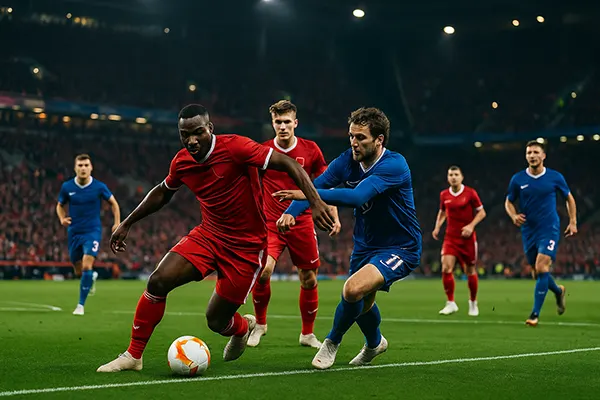How to Read Opponents in Sports Poker: A Guide for Kartáč Casino Players

In the exciting world of sports poker, being able to read your opponents can give you a significant advantage. Whether you’re playing in a high-stakes game at online casino Kartáč or a friendly match with friends, understanding the subtle cues of your opponents can help you make better decisions and increase your chances of winning. This guide will walk you through the key aspects of reading opponents, focusing on physical and verbal cues, behavioral patterns, betting strategies, decision timing, and the psychological drives of players.
Physical Cues and Their Meaning
One of the most telling ways to read an opponent in poker is through their physical cues. These cues, often referred to as “tells,” can provide insight into a player’s hand and strategy. Common physical tells include changes in breathing, facial expressions, and eye movement. For example, a player who suddenly starts breathing heavily might be nervous, suggesting they could be bluffing. Alternatively, a player who avoids eye contact or looks at their chips immediately after seeing their cards might be excited about a strong hand. Observing these subtle physical changes can help you gauge the strength of your opponent’s hand.
Verbal Cues: How Words Give the Player Away
Verbal cues are another important aspect of reading opponents. The way players talk about their hands or the game can reveal a lot about their confidence levels and intentions. Players who speak confidently or use aggressive language may be trying to intimidate you into folding, possibly indicating a weaker hand. Conversely, those who seem uncertain or avoid conversation might actually have a strong hand and are trying to downplay their confidence. By paying attention to what players say and how they say it, you can gain insights into their strategies and adapt your own accordingly.
Behavioral Patterns and Strategies
Understanding the behavioral patterns of your opponents is crucial in sports poker. Some players might consistently bluff when they have a weak hand, while others only bluff when they have a decent chance of winning. Observing these patterns over time can help you predict future actions. For example, a player who raises every time they have a good hand might fold more often when they check or call. Recognizing these patterns allows you to make more informed decisions about whether to call, raise, or fold.

Analyzing Bets and Their Size
The size of a player’s bet can often indicate the strength of their hand. Small bets might suggest a weak hand or a bluff, while large bets can either indicate confidence or an attempt to scare others into folding. Analyzing the betting patterns of your opponents can provide valuable information. For instance, a player who suddenly makes a larger-than-usual bet might be trying to protect a strong hand or force other players out of the pot. By carefully observing the size and frequency of bets, you can better understand the intentions behind them.
Understanding the Timing of Decisions
The timing of a player’s decisions can also be a significant indicator of their hand strength. Quick decisions often suggest a strong or very weak hand, as the player already knows what they want to do. On the other hand, a player who takes a long time to decide might be uncertain or contemplating a bluff. Timing tells can be particularly useful when combined with other cues, such as physical and verbal signs. By paying attention to how long your opponents take to make decisions, you can gain insights into their thought processes and adapt your strategy accordingly.
Opponent Psychology: What Drives Players
Understanding the psychology of your opponents is key to reading them effectively. Different players are driven by different motivations, such as the thrill of winning, the fear of losing, or the desire to outsmart others. Recognizing these psychological drivers can help you predict how they might behave in certain situations. For instance, a player who hates losing might play more conservatively, while a player who loves the thrill of risk-taking might be more prone to bluffing. By understanding what motivates your opponents, you can anticipate their moves and plan your strategy accordingly.
Adjusting to Your Opponent and Adapting Your Strategy
The ability to adapt to your opponents is what separates good poker players from great ones. As you gather information about your opponents’ physical cues, verbal tells, betting patterns, decision timing, and psychological drivers, you can adjust your strategy to counter their tactics. If you notice an opponent is bluffing frequently, you can call more often to catch them out. If a player is conservative and only bets big with strong hands, you might fold more often when they raise. The key is to remain flexible and continually reassess your strategy based on the information you gather during the game.
Reading opponents is an essential skill in sports poker, one that can give you a significant edge in any game. By paying attention to physical and verbal cues, understanding behavioral patterns, analyzing betting sizes, observing decision timing, and considering the psychological motivations of your opponents, you can make more informed decisions and increase your chances of success. Whether you’re playing at the Kartáč online casino or in a live game, these skills will help you stay one step ahead of your competition. Remember, the more you practice, the better you’ll become at reading your opponents and adapting your strategy to win.




